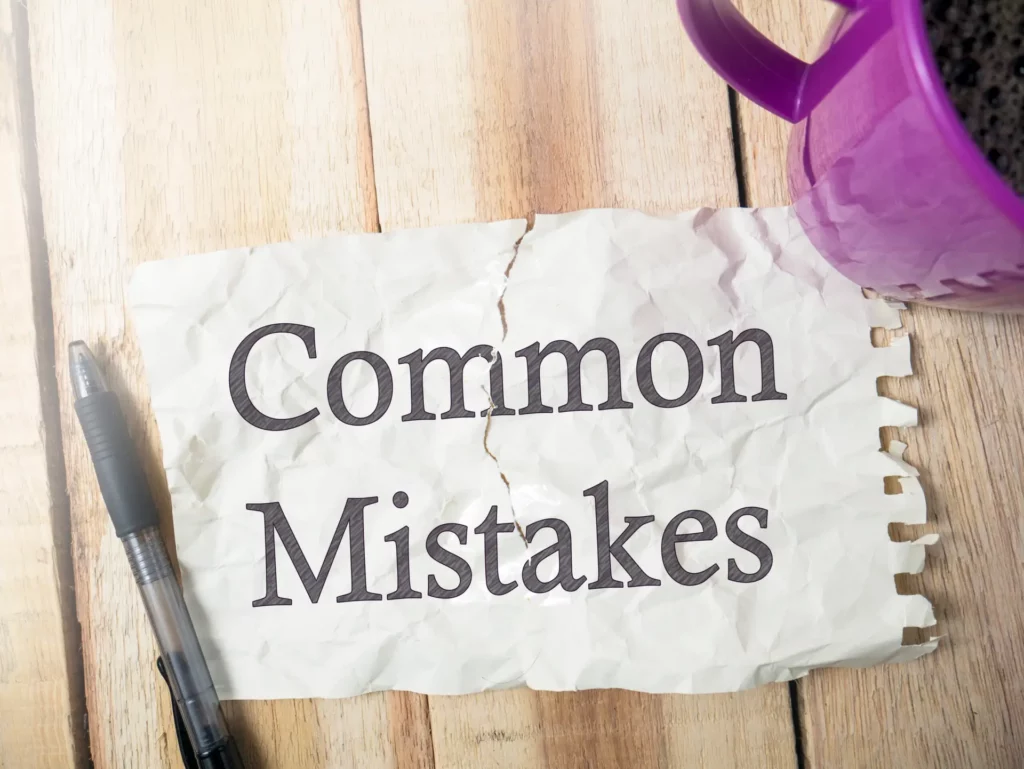Navigating the Waters of Who vs. Whom
Navigating the nuanced waters of English grammar, we often encounter the crossroads of choosing who vs. whom. While seemingly straightforward, these two pronouns carry with them the weight of grammatical precision and formality that can significantly impact the clarity and professionalism of our communication. The distinction between “who” and “whom” is not merely academic; it reflects a deeper understanding of language structure, enhancing written and spoken expressions in professional and formal contexts.
The confusion surrounding who vs. whom stems from their interchangeable appearance in sentences despite their distinct grammatical roles: “who” as a subject pronoun and “whom” as an object pronoun. This subtle yet critical difference influences how we construct questions, relate clauses, and convey information. In today’s rapidly evolving language landscape, where informality often takes precedence, mastering the appropriate use of “who” and “whom” is a testament to linguistic proficiency and respect for the nuances of English grammar.
This blog post embarks on a comprehensive journey to demystify who vs. whom, aiming to equip readers with the knowledge and confidence to employ these pronouns correctly. By delving into their grammatical roles, exploring practical applications, and addressing common challenges, we seek to illuminate the path for more precise, more effective communication. Let’s unravel the mysteries of who vs. whom, embracing the elegance and precision they bring to our linguistic endeavors.

Part 1: Understanding Who and Whom
At the heart of the who vs. whom debate lies their grammatical identities: “who” serves as a subject pronoun, and “whom” functions as an object pronoun. Grasping this distinction is crucial for navigating their correct usage.
Grammatical Roles
- Who: Used to refer to the subject of a verb, “who” asks about the person acting. It aligns with other subject pronouns like “he,” “she,” and “they.”
Example: “Who is attending the meeting?” (“Who” is the subject acting as attending.) - Whom: Employed when referring to the object of a verb or preposition, “whom” inquires about the recipient of an action. It correlates with object pronouns such as “him,” “her,” and “them.”
Example: “Whom did you invite?” (“Whom” is the object receiving the invitation’s action.)
Rules and Usage
The crux of choosing between who vs. whom is identifying the pronoun’s role within the sentence. Is it the doer of the action (subject) or the receiver (object)?
- Presence of a Preposition: “Whom” is often the correct choice when a preposition precedes the pronoun.
Example: “To whom it may concern” employs “whom” as it follows the preposition “to.” - The He/Him Method: A simple trick to determine the correct pronoun is substituting “who” or “whom” with “he” or “him” (or “she”/”her” for female subjects). If “he” fits, use “who”; if “him” sounds right, “whom” is the way to go.
Example: For “Who/Whom loves ice cream?” we substitute: “He loves ice cream.” Thus, “Who loves ice cream?” is correct.
Common Misconceptions
Dispelling misconceptions about who vs. whom can clarify their application:
- Formality Over Function: While “whom” is often associated with formality, its correct use is primarily a function of grammar, not style.
- Interchangeability: Despite tendencies towards informality, especially in spoken English, who vs. whom are not always interchangeable without affecting grammatical correctness.
Mastering the foundations of who vs. whom sets the stage for adeptly navigating their use in more complex sentences and contexts. By understanding their grammatical roles and applying simple rules for their application, we can enhance the precision and professionalism of our communication.

Part 2: Practical Application of Who and Whom
Moving beyond the basics, the practical application of who vs. whom in various communication scenarios highlights their importance in enhancing clarity and accuracy. Here’s how these pronouns function in different contexts.
In Questions
Questions are a typical scenario where the choice between “who” and “whom” becomes pivotal. Correct usage clarifies the inquiry and reflects the speaker’s or writer’s grasp of grammar.
- Direct Questions: When posing questions, determine whether the answer would be the subject or object of the sentence. Use “who” for subjects and “whom” for objects.
Example: “Who won the game?” vs. “Whom did you call?” - Indirect Questions: In reporting questions, use “who” and “whom” correctly based on each pronoun’s role in the indirect statement.
Example: “Can you tell me who is on the guest list?” vs. “She asked whom I had seen at the party.”
In Relative Clauses
Relative clauses, which provide additional information about a noun, often necessitate choosing between who vs. whom based on the pronoun’s function in the clause.
- Defining Relative Clauses: These clauses, essential to the sentence’s meaning, rely on correctly using “who” or “whom” to avoid ambiguity.
Example: “The person who called you is waiting outside.” vs. “The person whom you called is waiting outside.” - Non-defining Relative Clauses: These clauses add extra information and are set off by commas—the choice between who vs. whom follows the same grammatical rules.
Example: “My brother, who lives in New York, is visiting.” vs. “My brother, whom I admire greatly, is visiting.”
Prepositions and Whom
When a preposition is involved, “whom” is typically the correct choice, as it often functions as the object of the preposition.
- Example: “With whom were you speaking?” The presence of the preposition “with” necessitates using “whom.”

Part 3: Simplifying Who vs. Whom
While the rules governing who vs. whom may seem daunting, several strategies can simplify decision-making and make it more intuitive.
Easy Determination Tricks
- The He/Him Method Revisited: As mentioned, substituting “who” or “whom” with “he” or “him” can quickly clarify which pronoun to use. This method applies to both questions and statements.
- Simplification: Break down complex sentences to identify the pronoun’s role more clearly. Simplifying the sentence structure can make it easier to choose between “who” and “whom.”
Common Usage Trends
Understanding current who vs. whom trends can help more adeptly navigate formal and informal contexts.
- Shifting Preferences: In spoken English and informal writing, “who” is increasingly used in cases where “whom” might traditionally have been correct. Awareness of your audience and the context can guide the appropriate level of formality.
- Formal Writing: In academic, legal, and professional settings, adhering to the traditional rules for “who” and “whom” is advisable to maintain formality and precision.
Practice Exercises
Regular practice is vital to mastering who vs. whom. Engage with targeted exercises, such as:
- Online Quizzes: Numerous grammar websites offer quizzes on “who” vs. “whom.”
- Writing Practice: Incorporate both pronouns into your writing, consciously applying the rules discussed to reinforce learning.

Part 4: Common Mistakes and How to Avoid Them
Certain pitfalls can lead to misuse even with a solid understanding of who vs. whom rules. Recognizing and learning to avoid these common mistakes can refine your grammatical precision.
Overcorrection and Avoidance
One frequent issue is the overcorrection to “whom” in instances where “who” would be grammatically correct, often driven by a desire to sound more formal or sophisticated. Conversely, some may avoid “whom” altogether due to uncertainty about its proper application.
- Balanced Approach: Understand that both pronouns have their place. Use the substitution trick (he/him) to determine the correct choice and avoid overcorrection or avoidance.
Misplacing Prepositions
In questions and relative clauses, prepositions often pair with “whom.” Misplacing these prepositions or awkwardly constructing the sentence to avoid “whom” can lead to grammatical errors.
- Correct Placement: Keep the preposition closely linked to “whom,” even in questions. “To whom did you give the report?” preserves the grammatical integrity better than “Who did you give the report to?”
Ignoring the Role in the Sentence
Choosing who vs. whom based solely on how a sentence sounds rather than the pronoun’s role can result in grammatical inaccuracies.
- Function Over Form: Consider whether the pronoun acts as the subject or object within the sentence. This approach ensures grammatical correctness over mere auditory preference.
Conclusion
The distinctions between “who” and “whom” are more than just grammatical formalities; they are essential to precise and effective communication. This exploration into their proper use illuminates the technicalities of English grammar and the importance of linguistic accuracy in conveying clear and professional messages. As we’ve seen, understanding the roles of “who” and “whom,” applying practical application strategies, and recognizing common pitfalls can significantly enhance your command of language.
Encouragement for Continued Learning
Your journey with “who” and “whom” is part of a broader endeavor to navigate the complexities of English grammar. Let curiosity drive your exploration, and don’t hesitate to seek out further resources, exercises, and feedback to deepen your understanding. Remember, every step toward grammatical proficiency improves your communication and enriches your connection with others through language.
If this guide has clarified the waters of “who” vs. “whom” for you, consider sharing it with others embarking on their grammatical voyage. Let’s elevate the communication standard, one pronoun at a time.

Further Exploration
For those eager to dive deeper into the intricacies of English, countless resources await. From comprehensive grammar guides to interactive language learning platforms, the tools at your disposal are more accessible than ever. Engage with these materials, challenge yourself with new exercises, and remain curious and open to discovery. We offer a line of comprehensive grammar and punctuation courses and feature a mastery quiz bundle to cement your further mastery of grammar and punctuation. Feel free to access the endorsed resources below to enhance your learning experience.





